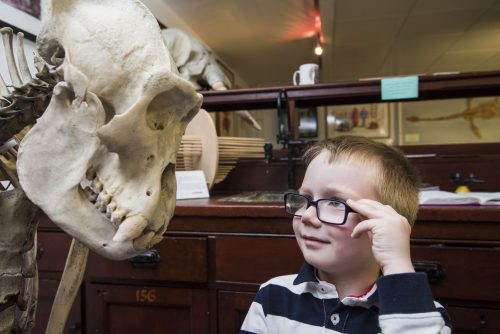D’Arcy Thompson’s On Growth and Form – 100 Years On and Still Growing!
Posted by mhjarron, on 7 February 2017
“For the harmony of the world is made manifest in Form and Number, and the heart and soul and all the poetry of Natural Philosophy are embodied in the concept of mathematical beauty.”

D’Arcy Thompson’s On Growth and Form, which celebrates its centenary this year, is one of the key works at the intersection of science and the imagination. Hailed as “the greatest work of prose in twentieth century science”, it is a book that has inspired scientists, artists and thinkers as diverse as Alan Turing, C. H. Waddington, Claude Lévi Strauss, Jackson Pollock and Norman Foster. It pioneered the science of biomathematics, and has had a profound influence in art, architecture, anthropology, geography, cybernetics and many other fields. This year we celebrate the book’s centenary with a range of conferences, exhibitions and other happenings around the world, all of which are being promoted through the website www.ongrowthandform.org

D’Arcy Wentworth Thompson was born in Edinburgh in 1860. He took up the first chair of biology at University College, Dundee (now the University of Dundee) in 1885, aged just 24, and spent much of his first decade building up an extensive Zoology Museum. In 1889 he wrote to one of his students, “I have taken to Mathematics, and believe I have discovered some unsuspected wonders in regard to the Spirals of the Foraminifera!”
D’Arcy became convinced that the laws of mathematics could be used to explain the growth and form of living organisms. This was a controversial topic and it wasn’t until 1917 that he finally published his ideas in On Growth and Form. Nature called it “at once substantial and stately… It is like one of Darwin’s books, well-considered, patiently wrought-out, learned and cautious.” The comparison to Darwin is interesting, given that many saw the book as arguing against Darwinian evolution. D’Arcy said, “where it undoubtedly runs counter to conventional Darwinism, I do not rub this in, but leave the reader to draw the obvious moral for himself.” The “obvious moral” was that Darwin was wrong in seeing the evolution of form purely as a gradual process dictated by natural selection. D’Arcy’s Theory of Transformations, the most famous and radical chapter in the book, proposed that physical forces could cause a transformation from one species into another based on mathematical principles. Through his iconic transformation diagrams, D’Arcy demonstrated that laws of growth rather than evolution could be used to explain the different forms of related species.
For much of the 20th century, D’Arcy’s ideas ran counter to biology’s increasing focus on evolution and genetics but a number of developmental biologists such as C H Waddington continued to champion his work. He also found followers in other fields, such as the father of modern computing, Alan Turing.
By the 1980s, the growth of evolutionary-developmental biology had caused D’Arcy’s work to be revisited by many that had hitherto dismissed it. Richard Dawkins has noted that “It is one of the minor tragedies of biology that D’Arcy Thompson died just before the computer age, for almost every page of his great book cries out for a computer.” Technological developments have indeed transformed the scientific relevance of D’Arcy’s work, and new mathematical modelling techniques have allowed his theories to be tested scientifically for the first time. Today even arch-geneticists like Dawkins freely acknowledge D’Arcy’s significance.
D’Arcy has also been described as having a greater impact on the worlds of art and architecture than any other scientist of the 20th century. On Growth and Form inspired architects and engineers from Le Corbusier and Mies van der Rohe to Norman Foster and Cecil Balmond. Henry Moore, Richard Hamilton, Eduardo Paolozzi and Salvador Dali are among the artists known to have read and drawn on the book.

Although D’Arcy’s original museum was demolished in the 1950s, his surviving collection is now displayed in the D’Arcy Thompson Zoology Museum at the University of Dundee, which is used not just in teaching life sciences but also by students of fine art, design, philosophy, creative writing and other subjects. The museum is open to the public regularly over the summer and for special events and activities throughout the year.
D’Arcy Thompson has recently been described as “the most important figure in the future of biology” and we are determined to ensure his work continues to exert a significant influence for many years to come. The centenary of On Growth and Form is being celebrated with a major conference and exhibition in Dundee in October (call for papers to follow soon!), and many other activities both here and around the world. Visit www.ongrowthandform.org to find out more.


 (5 votes)
(5 votes)
I am a structural engineer from Prishtina, Kosovo.
I read D’Arcy W. Thompson book and I have been profoundly touched by the manner in which D’Arcy Thompson treated the subjects.
Now, I am working on a Conference paper and the main inspiration is coming from the surface tension subject of the book, i.e. the analogy with structures.
Yours faithfully
this work has been my inspiration when speaking to students of architecture about show form and grids – amazing research and findings.